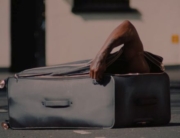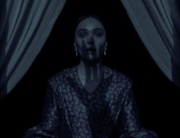The first thing you must know before you see this documentary about the cultural impact of 1968’s Night of the Living Dead is that it’s not necessary in the slightest to see George Romero’s film beforehand. The doc uses quite liberally clips from his film.
Birth of the Living Dead covers the basics of what you would want to know about a gnarly little movie that Romero, then in his 20s and only with experience in TV commercials and Mr. Roger’s Neighborhood, made with some friends and colleagues for about a hundred grand in Pittsburgh. When I say “basics,” I mean in the sense of a thesis paper in film form as opposed to a more in-depth documentary with talking head, footage, occasional quotation, dutiful narrator (repeat).
If you want to know about how it got made from ALL its main sources—such as the actors (sadly Duane Jones, the star, is long gone) or co-writer John Russo, you will need to look elsewhere. Former New York Daily News writer Joe Kane’s recent book about the making of the film, it’s influence on zombies and Romero’s career, is much more comprehensive, though it should be noted there was possibly a fallout between Romero and his collaborators regarding a terrible 30th anniversary special edition in which the original film producers, without Romero, added newly filmed scenes and music, but that’s another story altogether.
The only person interviewed from Night of the Living Dead, and the best reason really to see the film, is Romero. He’s always a fun interview. Now in his 70s, he’s still genuinely flabbergasted that the film even got finished much less that it made a splash. (He admits that once the Museum of Modern Art and the French critics got a hold of it, “People said, oh, now it’s a ‘real’ movie” as before it was considered drive-in fare.) He’s gregarious and funny, with a big toothed grin and an old-time Bronx accent, and he explains clearly how it really took a group effort to make the film with the local townspeople, such as a news reporter writing his own copy and favors from the police and chess game wagers to use sound equipment. When asked about the grim nature of the ending, Romero quips, “Well, people can still go to the refreshment stand when they walk out.”
Yet most of the film is about what the public thought of it. It could be called “The Life and Times of the Movie Formerly Known as Night of the Flesh Eaters.” Elvis Mitchell describes, in good detail, how radical it was for an actor like Duane Jones, a black man, to be the lead and to be not only smart but tough, angry, and aggressive.
There’s even a New York University film professor, Sam Pollard, to give a scene-by-scene breakdown of just how bad-ass and unflinching Romero’s choices were. But I would have liked it if it had gone more in depth with other aspects of its legacy—there is some tip of the hat to its status as a modern horror film, but not quite enough. (Curiously, a teacher, coincidentally from the Bronx, shows his elementary school class the film as part of his curriculum—kind of disturbing considering how young the kids look, not that they don’t get into it.) How the film became part of the newly emerging midnight movie market (El Topo, Pink Flamingos) is only touched upon briefly as sandwiched into the brief business about the movie getting into a copyright snafu—all cause of a stupid (c) symbol on the title card—that caused the makers a loss of untold millions over the years.
As for those creepy zombies, producer Gale Anne Hurd single outs how programs like The Walking Dead have been influenced by the film. Unfortunately, none of Romero’s other dead films are featured. They were, if not far more groundbreaking, as important as Altman’s or Ashby’s and as socially conscious and edgy for the time. I recommend viewing the movie before seeing Birth, if only to see people still gasping in rightful shock.

















I enjoyed the movie “Night of the Living Dead.” One reason is that Duane Jones is my cousin. I do agree that it is sad that he is no longer with us. I liked him in “Beat Street” as well.